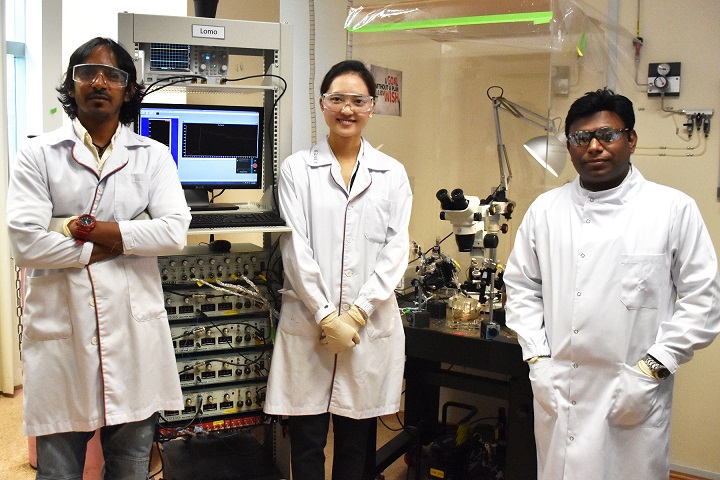
Dr Sajikumar Sreedharan and undergraduate student Karen Pang, PhD student Mahima Sharma, post-doctoral fellow Dr. Krishna Kumar – all from the Department of Physiology at the National University of Singapore (NUS) – and collaborator Dr. Thomas Behnisch from China, have provided fundamental information about the precise timing that can critically affect the formation of memory processes. The study was published in the prestigious international journal Proceedings of the National Academy of Sciences of the United States of America (PNAS) on 01 March 2019.
The NUS team found that neurons in the hippocampus, a brain region critical for the formation of memory, use a surprisingly wide variety of learning mechanisms. One such form of learning, termed “spike-timing-dependent plasticity (STDP)”, depends on the timing of each pair of electrical spikes (electrical activity used to transmit information within neurons) in the presynaptic neuron and the post-synaptic neuron. An electrical spike in the presynaptic neuron stimulates the neuron to release neurotransmitters, which travel across the synapse to activate the postsynaptic neuron, where the information is converted back into an electrical spike. When the pre- and postsynaptic neurons are active at the same time (less than 30 milliseconds apart), the connections between them are strengthened. However, when the presynaptic neuron fires earlier by 30 milliseconds or more, or when the postsynaptic neuron fires earlier by more than 10 milliseconds, the connections are strengthened to a lesser degree.
The STDP model has been proposed to explain spatial and temporal sequence learning. Moreover, the STDP model comes in handy in various situations where object identification and decision-making have to be done quickly, e.g. projectile avoidance or friend-foe identification.
Based on this improved understanding of how normal brains compute information and learn, researchers can identify mechanisms for further study that may be involved in conditions like schizophrenia, depression, sleep loss, stroke, chronic pain, learning disability, and Alzheimer’s disease.




